
PREPARING THE LOCATION
Choosing cable
Excessive resistance in the speaker cable
wastes power and alters the frequency
response of the speaker. Always try to keep
the resistance as low as possible with the
loop resistance preferably below 0.5 ohms
for non-critical applications and below
0.2 ohms for best results. Use the table of
figure 11 to calculate the minimum gauge
of cable required.
Existing drywall construction
(retrofit)
Position the template at the desired
location of the speaker. The template is
marked with both vertical and horizontal
centre lines to aid alignment.
Trace round the outer edge of the template
and cut neatly just inside the line.
To improve the mechanical integrity of the
wall and reduce the likelihood of rattles, we
recommend you apply a bead of wood glue
or mastic along the joints between the back
of the plasterboard and the studs in the
vicinity of the speaker.
Run the cable to the aperture, allowing
enough length to comfortably connect the
speaker, but not too much, as the excess
may rattle against the structure.
New drywall construction
The speaker can be installed once the wall
is completed in the same manner as
retrofitting, but it is easier to position and
cut the hole if the optional pre-mount kit is
used before the plasterboard (sheetrock) is
fitted. Staple or nail the PMK to the studs
as described in the instructions with the kit.
Run the cable and secure it to the fixing
point on the PMK. Allow enough length to
comfortably connect the speaker, but not
too much, as the excess may rattle against
the structure. Results are affected by how
well the plasterboard is attached to the
studs and we recommend gluing as well as
screwing or nailing the panels to the studs
in the vicinity of the speaker. Once the
board is fitted, the inner flange of the PMK
serves as a guide for a hole router or saw.
If extra acoustic isolation to adjoining
rooms is required or some protection
against the spread of fire, use the optional
back box in place of the PMK. Follow the
instructions with the back box for fitting
and running the cable. When fitting the
plasterboard, use mastic between the
sheets and the back box to avoid rattles.
Rout or saw out the speaker aperture using
the backbox flange as a guide. Depending
on the diameter of the router, you may
need to square off the corners with a saw.
Solid wall construction
In order for the bass performance not to be
compromised, the speaker requires a cavity
volume of at least 20 litres (0.7 cu ft). This
means that, in a standard 10cm (4 in) thick
wall, the cavity will extend beyond the
boundaries of the speaker frame. It is
possible to provide this cavity simply by using
a lintel, covering the hole with plasterboard
and fitting the speaker as described above for
retrofitting into a drywall. (figure 6) However,
the back box provides a useful means of
defining the minimum volume required.
Follow the instructions with the back box
for fitting and running the cable. If using a
wet plaster finishing method, first paint a
layer of PVA adhesive onto the back box
before plastering to avoid rattles as a result
of the plaster shrinking away from the back
box as it dries. If using plasterboard
(sheetrock), stick the sheets to the surfaces
of the back box using flexible mastic. Rout
out the aperture using the flange as a
guide. Depending on the diameter of the
router, you may need to square off the
corners with a saw. In all cases, we
recommend not using cement or mortar to
fix the back box into the brick or
blockwork. rattles are best avoided by
using flexible mastic and wedges. (figure 7)
Damping the cavity
Fill the wall cavity or back box, but not the
space immediately behind the speaker, with
unlined fibreglass or mineral wool matting.
The packing density should be just enough
to comfortably prevent the material from
dropping or sagging over time. In an open
wall cavity, fill to a distance of at least 30cm
(1 ft) above and below the speaker. (figure 8)
IMPORTANT: Ensure that the materials you
use meet local fire and safety regulations.
Fitting the speaker
All connections should be made with the
equipment switched off.
With the grille and speaker baffle removed,
position the wall frame in the aperture and
screw in the 10 screws visible from the
front. (figure 9) These screws automatically
swing out clamping dogs that locate behind
the mounting surface. Ensure that they
have located properly before fully tightening
the screws. A certain amount of flexing of
the frame is allowed to take up unevenness
in the mounting surface, but do not
overtighten the screws as excessive
distortion of the speaker frame may result
and the grille will be difficult to fit.
Connect the cable, observing the correct
polarity.
Once the wall frame is secure, screw in the
baffle with the drive units and crossover,
using the 8 screws provided. (figure 10)
Check that the grille will slide comfortably
into place without fitting it fully. If it is too
tight, remove the baffle and check the wall
frame clamps for excessive tightening and
distortion.
Customising
The frame has a paintable white semi-matte
finish, ready if necessary to be re-finished
to match your own decor. Remove the grille
and fit the paint mask before re-finishing.
Do not re-finish the drive units or baffle
area behind the grille. Avoid touching the
drive units, as damage may result.
Before painting the grille, peel off the fabric
scrim from the back, otherwise the pores will
get clogged and the sound will be impaired.
If the scrim does not stay in place properly
when replaced, spray the back of the grille
mesh (NOT the scrim) with a light coating of
3M SprayMount adhesive or similar.
Français
Garantie limitée
Cher Client,
Bienvenue à B&W.
Ce produit a été conçu et fabriqué en vertu
des normes de qualité les plus rigoureuses.
Toutefois, en cas de problème, B&W
Loudspeakers et ses distributeurs
nationaux garantissent une main d’œuvre
(exclusions possibles) et des pièces de
rechange gratuites dans tout pays desservi
par un distributeur agréé de B&W.
Cette garantie limitée est valide pour une
période de cinq ans à compter de la date
d’achat ou une période de deux ans pour
les composants électroniques, y compris
les haut-parleurs amplifiés.
Conditions
1 La garantie est limitée à la réparation
de l’équipement. Les frais de transport
ou autres, les risques associés à
l’enlèvement, au transport et à
l’installation des produits ne sont pas
couverts par cette garantie.
2 La garantie est exclusivement réservée
au propriétaire d’origine et ne peut pas
être transférée.
3 Cette garantie ne s’applique qu’aux
produits faisant l’objet de vices de
matériaux et/ou de construction au
moment de l’achat et ne sera pas
applicable dans les cas suivants :
a. détériorations entraînées par une
installation, connexion ou un emballage
incorrect,
b. détériorations entraînées par un usage
autre que l’usage correct décrit dans le
manuel de l’utilisateur, la négligence,
des modifications ou l’usage de pièces
qui ne sont pas fabriquées ou agréées
par B&W,
c. détériorations entraînées par un
équipement auxiliaire défectueux ou
qui ne convient pas,
d. détériorations résultant de : accidents,
foudre, eau, chaleur, guerre, troubles
de l’ordre public ou autre cause ne
relevant pas du contrôle raisonnable de
B&W ou de ses distributeurs agréés,
e. les produits dont le numéro de série a
été modifié, effacé, éliminé ou rendu
illisible,
f. les produits qui ont été réparés ou
modifiés par une personne non
autorisée.
4 Cette garantie vient en complément à
toute obligation juridique nationale /
régionale des revendeurs ou
distributeurs nationaux et n’affecte pas
vos droits statutaires en tant que
client.
Comment faire une réclamation
en vertu de la garantie
Veuillez respecter la procédure ci-dessous,
si vous souhaitez faire une réclamation
sous garantie :
3

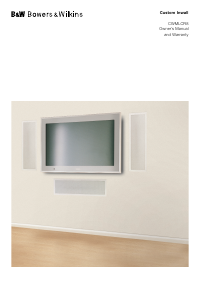


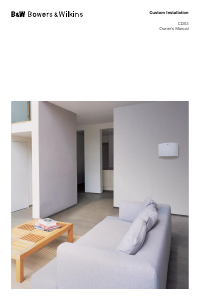
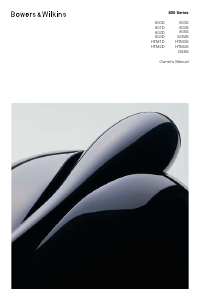
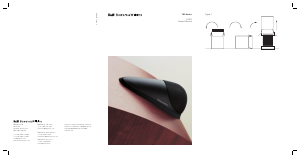


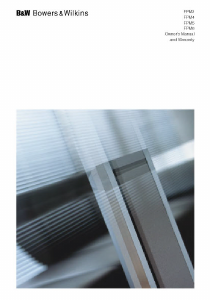
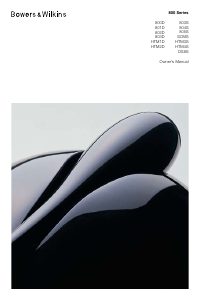
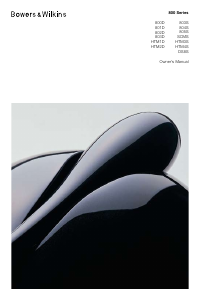
Zapojte se do konverzace o tomto výrobku
Zde můžete sdílet, co si myslíte o Bowers and Wilkins CWM LCR8 Reproduktor. Máte-li dotaz, nejprve si pozorně přečtěte návod. Žádost o příručku lze provést pomocí našeho kontaktního formuláře.